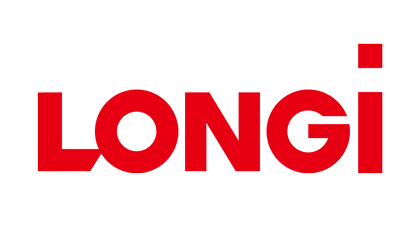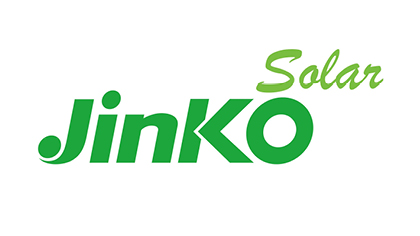Modules.
We offer a range of technologies, sizes and efficiencies of modules / solar panel or solar cells, ready for any installation.

Solar Panels.
A solar panel, also referred to as a solar module or solar cell, is designed to convert sunlight into electricity. This renewable energy source is leading in technology and is the most cost-effective option for electricity.
Open a Segen account today...
Are you a homeowner?
View homeowner infoFrequently Asked Questions
As the module technology moves fast and efficiency records are broken regularly, you will notice that half-cut cells are now the norm, and the old blue polycrystalline panels are rarely seen.
Now N-type monocrystalline modules with high efficiencies and technology such as TOPCon (Tunnel Oxide Passivated Contact), PERC (Passivated Emitter and Rear Contact), and ABC (all back contact), are a standard in the industry.
At Segen you’ll find the best range of modules from trustworthy brands from all-black panels perfect for residential arrays, to competitively priced commercial panels exceeding 660W!
As there are many different types of solar panels, with various special aspects, it is important to have a firm understanding of what panel is right for your solar installation. A quick and reliable way to ensure quality is the top priority is to look out for the Silicon Module Super League brands. These are global leading manufacturers and act as a mark of trust within the solar industry.
It’s crucial to remember that the better output/higher efficiency solar cells will save you money on installation, whilst still achieving your energy goals.
Due to the physical constraints of roof space, the size of solar panels is always a pivotal consideration for homeowners and businesses. Solar Panels typically come in a range between 60-72 cell modules.
The solar industry is seeing growth towards larger models. However, it’s key to remember that solar energy is not always linked to size alone. The performance is dependent on the number of solar cells within the actual panel.
There are now hundreds of solar panel manufacturers across the globe. Most claim to make top-quality panels that last for 25 years or more. Look for manufacturers with a strong track record that will still be in business for the 10-year warranty period. To honour that warranty – we call this ‘bankability’. Additionally, evaluate the efficiency and performance ratings of their solar panels to ensure you get a high-quality product.
With major brands like JA Solar, Aiko, Canadian Solar, Jinko Solar, and others you can be confident they’ll be around for the long term.
The top seven solar panel manufacturers account for over 50% of the total solar panels produced worldwide. These companies are part of what is known as the Silicon Module Super League (SMSL). It is highly recommended to choose one of these brands to ensure long-term reliability and performance.
As manufacturers have driven technology forward, you can now get entirely black solar panels. If you are a homeowner and looking for something sleek and aesthetically pleasing, all-black panels are best suited.
Due to the larger scale of commercial solar projects, many still opt for a traditional design with a border, which keeps costs down slightly. Many commercial installations do not require the same level of aesthetics, so they can make an easy compromise to save on cost.
Monocrystalline: All-black solar panels.
Monocrystalline or ‘Mono’ cells are manufactured by cutting single sheets from a silicon bar. These single crystal cells allow for greater movement of electrons, resulting in slightly higher efficiency. The colouration of such cells tends to be black.
ABC: All-back contact.
All-back contact is a kind of monocrystalline panel in which all the electrical contacts are black.
Polycrystalline: Blue-tinge solar panels
The Polycrystalline or ‘Poly’ manufacturing process involves melting fragments of silicon into wafer sheets. This design restricts the flow of electrons more than in a single-sheet setup because multiple crystals are present within the cells. However, the overall efficiency difference is minimal, typically around 2-3% for most modules with the same rating. Polycrystalline tends to have a blue colour tinge and appears less uniform.
PERC: Higher-efficiency solar technology.
PERC or ‘Passive Emitter and Rear Cell/Contact’ cells are manufactured in a similar process to monocrystalline cells but have an integrated passivation layer. This increases efficiency by allowing light refraction through the back of the cell, and by reducing heat absorption and electron recombination. Put simply they offer higher efficiency than standard cells and are likely to perform better for a longer time.
Half-cell: Less micro-cracks, with better performance in shaded areas.
Half-cell modules are a new addition to the market, recognisable by a busbar in the centre of the panel. This design allows a 60-cell panel to be split into a 120-cell module. Smaller cells reduce mechanical strain and the occurrence of microcracks, leading to less degradation over time. Many half-cell modules also utilize PERC technology, enhancing their durability and lifespan.
Bifacial: Absorbs from both the front and back of the panel
Bifacial panels are designed to absorb light reflected from behind the panel. To do so they have cells mounted on the front and rear of the module. Instead of an opaque back sheet, this is transparent or translucent to allow as much light to pass through as possible. This light is reflected from the roof/ground surface and then picked up by the cells mounted at the rear of the panel. To maximise this refracted light, it is advisable to only choose Bifacial when the proper design criteria are met.
Bifacial modules shouldn’t be mounted flush to a residential tile roof. For example, in this scenario, the roof tiles are generally dark and will not reflect much light. If the modules are mounted flush to the tiles, the light will be blocked by the cells themselves. The best scenario is a flat roof with light-coloured roofing material, with the panels being mounted at an angle, a fixed distance above the roof itself.













